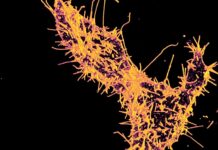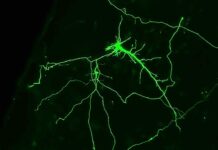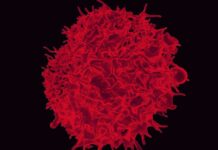Rethinking the Relationship
Traditionally, it has been believed that the immune system detects and attacks viral, bacterial, or parasitic pathogens. However, a gastroenterologist at Harvard Medical School, Jonathan Kagan, has published a groundbreaking hypothesis in Science that challenges this belief. Kagan argues that immune cells don’t respond to the pathogens themselves but rather to pathogen-associated molecular patterns (PAMPs) that are only released when the infectious agent makes an error. This concept is complex and requires a deep understanding of immunology.
A Closer Look at the Hypothesis
Kagan’s hypothesis suggests that successful pathogens can evade the immune system and only become a target when another bacterium or virus makes an error and triggers the alarm. PRRs are activated by unsuccessful pathogens that have made errors such as low-fidelity genomic replication or death due to a maladaptive mutation. This idea challenges established ideas in the immunology field and could lead to newer and better immunotherapies.
Insights from Kagan
Kagan has spent years discussing this topic with his colleagues and believes that his hypothesis is a synthesis of these discussions. He explains that there have been two intellectual disconnects over the years. The first is that the sensors of infection detect molecules that are hidden from those sensors by the infectious agent itself, and the second is that many of these DNA and RNA sensory proteins can be found in lysosomes. This idea is groundbreaking but requires a deep understanding of molecular biology and immunology.
Implications for the Future
Kagan’s hypothesis could lead to newer and better immunotherapies, challenging the traditional concept of how the immune system recognizes and responds to pathogens. Additionally, this idea means that the immune system is defending against a pathogen’s ability to rapidly evolve, which could have significant implications for long-term immune system interactions and the concept of an arms race between the immune system and pathogens. However, testing this hypothesis requires a complex experimental setup and a deep understanding of molecular biology and immunology.
Pathogen Infidelity: A Liberal Arts Education Analogy
Many evolutionary biologists propose that viruses have low-fidelity RNA and DNA polymerases because they allow themselves to make mistakes, which may result in new opportunities. This concept is similar to a liberal arts education where individuals try various topics before settling on something that works for them. A mistake-prone strategy provides a chance to jump into a different host and continuously adapt to the world around you, whereas a highly specialized strategy does not allow for evolvability, and the organism is dependent on its habitat for life. This analogy is complex and requires a deep understanding of evolutionary biology.
The Benefit and Achilles Heel of Pathogen Infidelity
Pathogens allow themselves to make mistakes for the long-term survival of the species. However, because these mistakes are random, it is difficult for the pathogen to control them. The immune system can take advantage of this by waiting for a pathogen to make a mistake, which happens during every infection. This idea requires a deep understanding of molecular biology and immunology. A successful pathogen can still be eliminated because of systemic immune responses. If one pathogen makes a mistake, the immune system will detect the infection, leading to inflammation and defense against the entire population of infectious agents.
The Reception and Implications of the Hypothesis
The reception to the hypothesis has been phenomenal. The scientific community believes that it makes sense, and there are many examples in the literature that counter the idea that the pathogen is the entity that pattern recognition receptors sense. However, testing this hypothesis requires a complex experimental setup and a deep understanding of molecular biology and immunology. If the hypothesis is validated, it could drive experimentation into new categories of immunotherapies or antibiotics that target cell walls to degrade them and induce an immune response. This concept is complex and requires a deep understanding of molecular biology, biochemistry, and immunology.
The Importance of High-Quality Content
In today’s world, it is essential to create content that aligns with Google’s E-A-T framework and adheres to the people-first approach. To create high-quality content that ranks well on Google search, content creators need to consider the target audience, provide reliable and helpful information, and establish expertise, authoritativeness, and trustworthiness. Additionally, content creators need to balance the level of perplexity and burstiness in the text, as it affects the readability and engagement of the audience.
Conclusion
Creating high-quality content that aligns with Google’s E-A-T framework and adheres to the people-first approach is crucial for content creators. It requires a deep understanding of the subject matter, excellent writing skills, and the ability to balance perplexity and burstiness to make the text engaging and readable. The concepts of immunology and molecular biology discussed in this article require a high degree of complexity, and it is essential to break them down into understandable pieces to convey the information effectively. By following the key factors discussed in this article, content creators can create high-quality content that ranks well on Google search and provides value to their audience.
Google News | Telegram
















